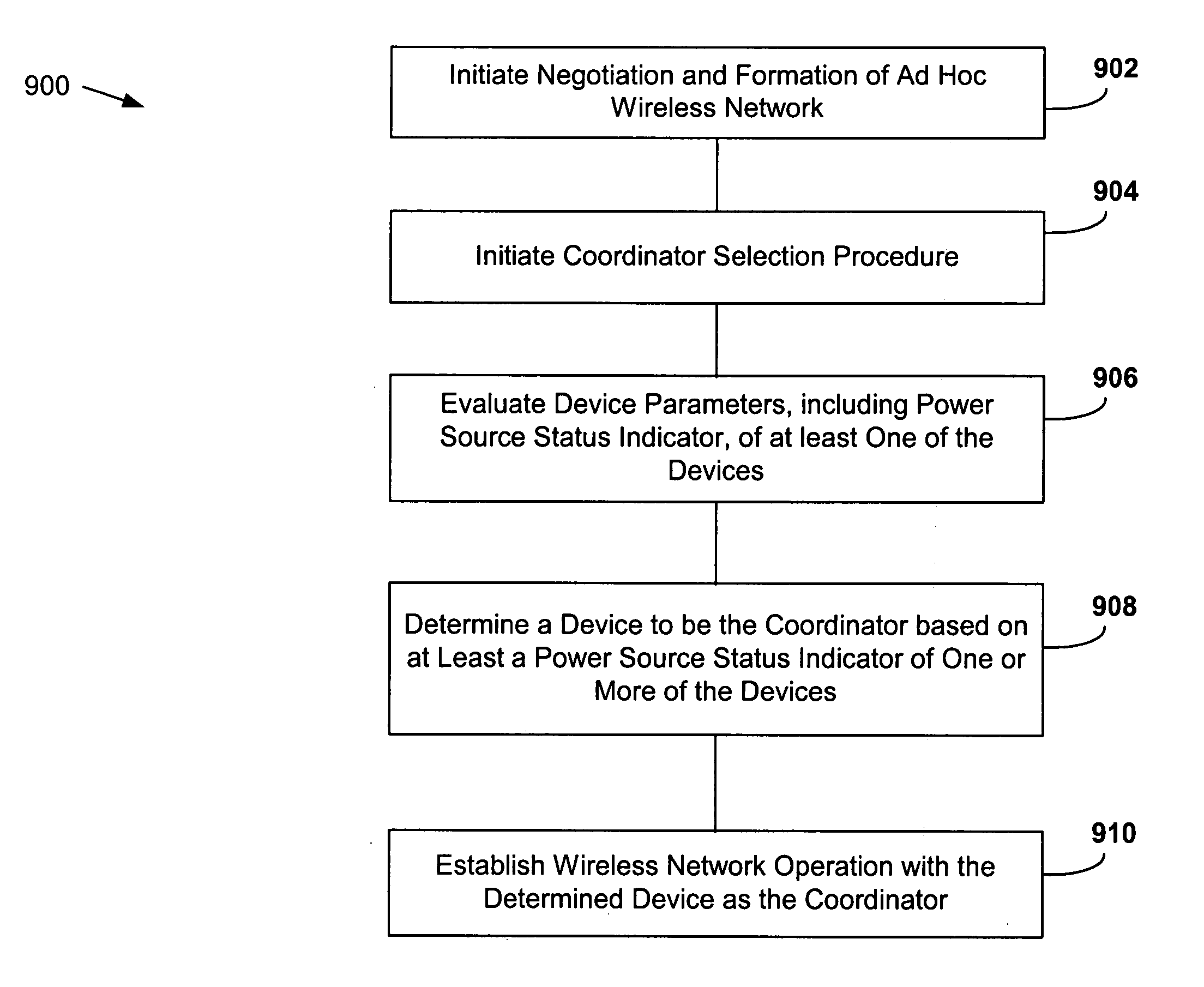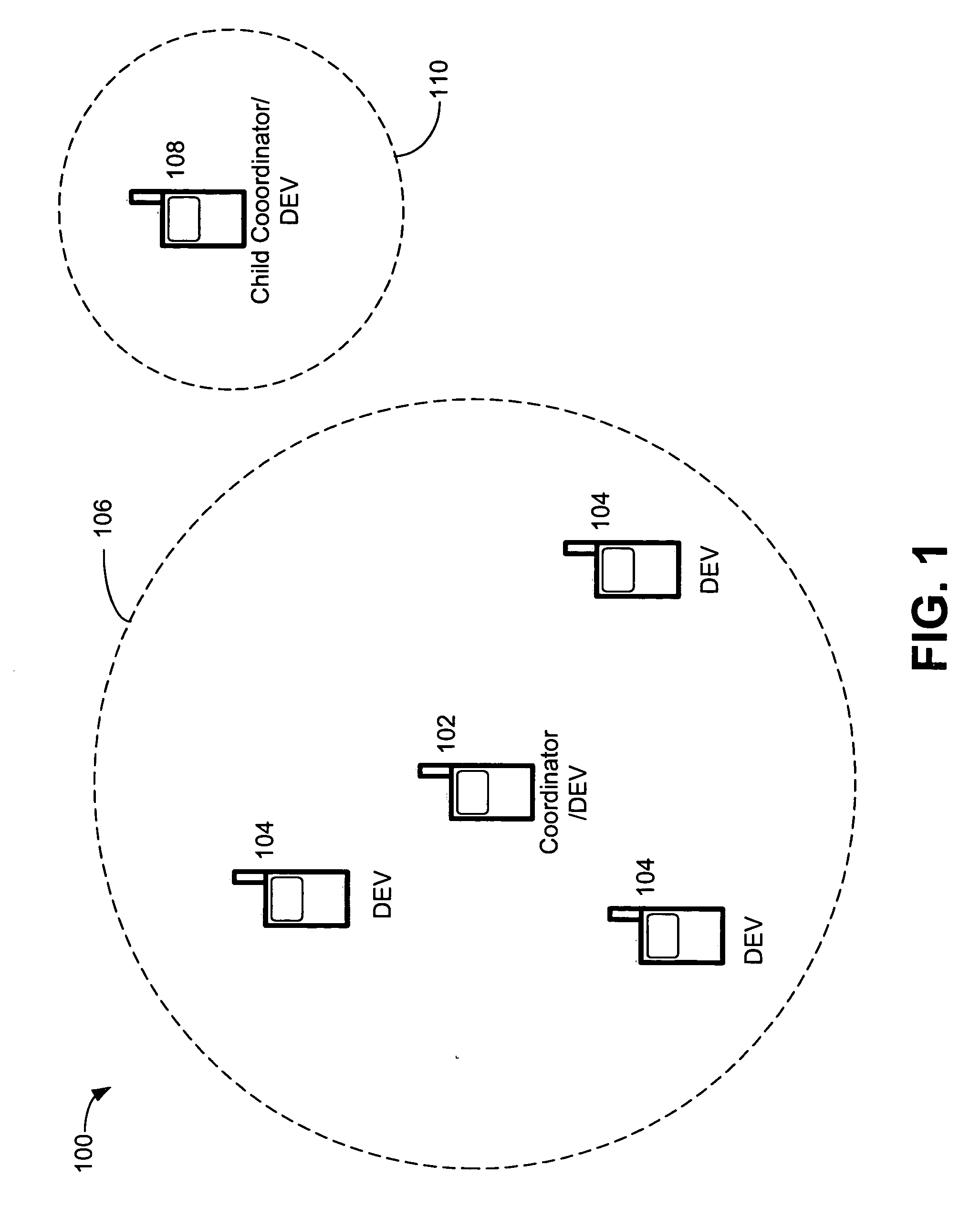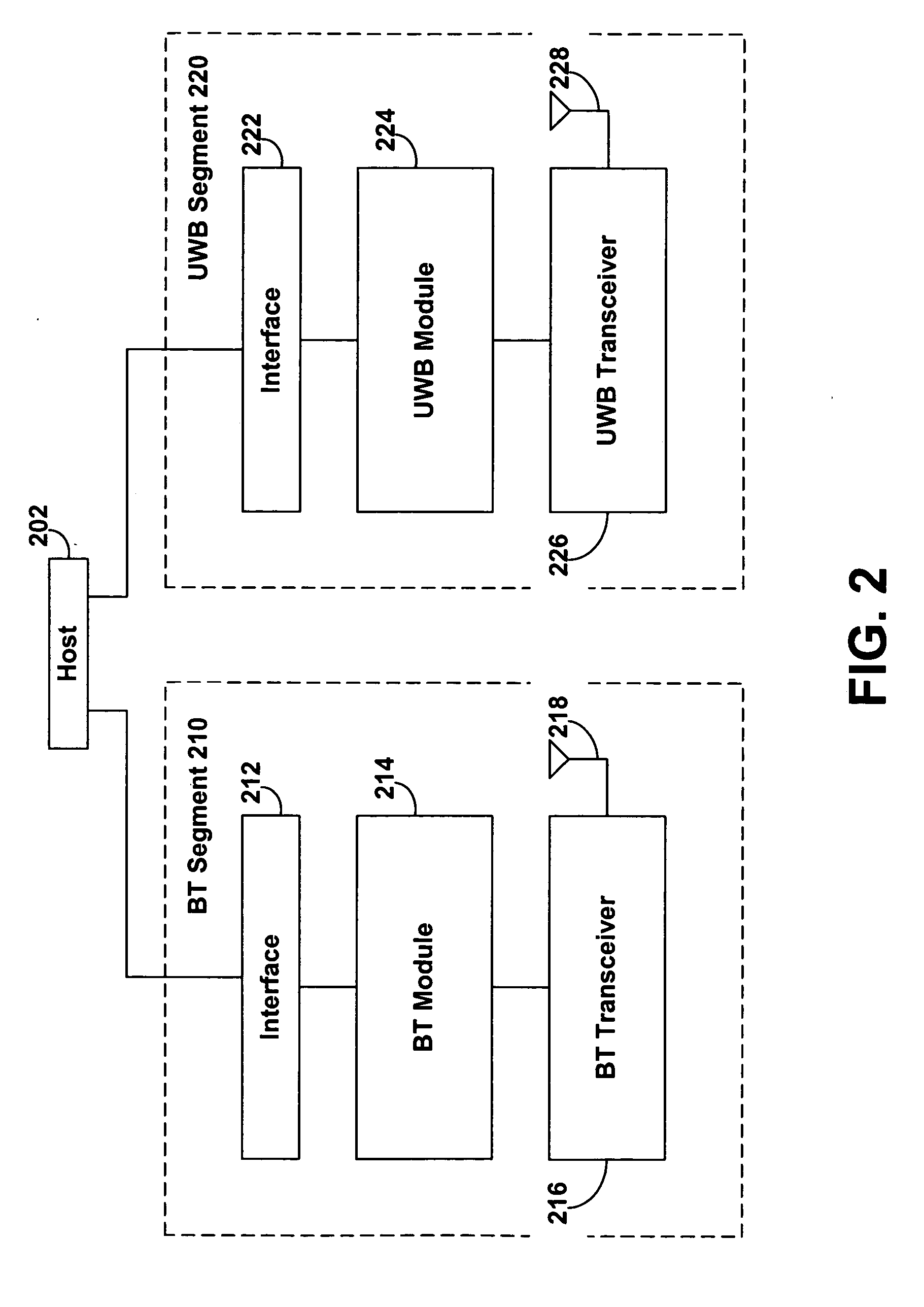Method and system for supporting residual energy awareness in an ad hoc wireless communications network
a residual energy awareness and wireless communication technology, applied in data switching networks, power management, high-level techniques, etc., can solve the problems of ir receiver design being more complex than the corresponding transmitter design, consuming more power for the pnc than the other devices in the piconet, and running out of power
- Summary
- Abstract
- Description
- Claims
- Application Information
AI Technical Summary
Benefits of technology
Problems solved by technology
Method used
Image
Examples
Embodiment Construction
I. Operational Environment
Before describing the invention in detail, it is helpful to describe an environment in which the invention may be used. Accordingly, FIG. 1 is a diagram of an operational environment 100 that includes a parent piconet 106 and a child piconet 110. In embodiments, piconets 106 and 110 may operate according to various standards, such as IEEE 802.15.3 and Bluetooth.
Piconet 106 includes a coordinator device 102 and a plurality of devices 104. Coordinator device 102 controls the resources of piconet 106. For example, coordinator 102 controls the basic timing of piconet 106 and regulates the admission of devices into piconet 106. In addition, coordinator 102 may manage various quality of service (QoS) and security aspects of the piconet. In embodiments employing IEEE 802.15.3, coordinator device 102 may be a piconet coordinator (PNC), while devices 104 are referred to as DEVs. In embodiments employing Bluetooth, coordinator device 102 may be a master device.
T...
PUM
 Login to View More
Login to View More Abstract
Description
Claims
Application Information
 Login to View More
Login to View More - R&D
- Intellectual Property
- Life Sciences
- Materials
- Tech Scout
- Unparalleled Data Quality
- Higher Quality Content
- 60% Fewer Hallucinations
Browse by: Latest US Patents, China's latest patents, Technical Efficacy Thesaurus, Application Domain, Technology Topic, Popular Technical Reports.
© 2025 PatSnap. All rights reserved.Legal|Privacy policy|Modern Slavery Act Transparency Statement|Sitemap|About US| Contact US: help@patsnap.com



